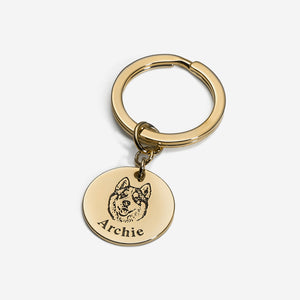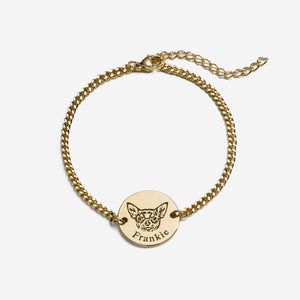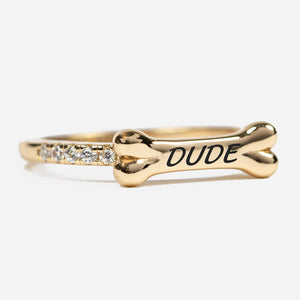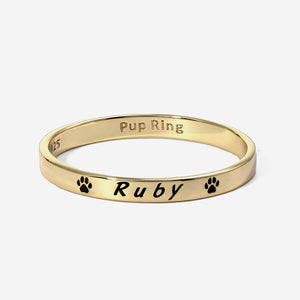You thought long and hard about your best friend’s name. Maybe you chose to go with the first thing that came to mind. Maybe you have always named your pets after food or the members of a rock star band. Or maybe your best friend came to you with a name already. No matter when, where. or why, you know your dog by its name. But what does that name mean to your dog?
Our dogs don’t share our language, and they process what we say in a different way. The words you use will have a different meaning to them based on how you use them. When we ask our dog to “sit”, “stay”, or “roll over”, those words work because we gave meaning to them- that’s what training is at its core. We taught our dog to know those sounds coming out of our mouths mean we want something specific from them. They listen to the tone of your voice, they look for your body language, and they think about the context of the situation and surroundings. They try to associate those sounds with things they do or observe in that same exact moment they hear it. In other words, the things you say combine with a lot of other factors when it comes to how your dog understands them.
Words have the meaning you give them!
If you’ve ever had a particularly observant dog, you’re well aware of the need to start spelling out special words to try to hide what you’re saying! My dog Cookie caught on to the word “outside” before I even had the time to start training him! I started spelling it out, but he quickly figured out that O-U-T-S-I-D-E meant… well, outside! Then I started having to spell the full word backwards. When he figured that out, I started saying it in Spanish, then spelling it in Spanish, and then spelling it backwards in Spanish too! In no time at all, because those sounds meant something so special and exciting to him. My dog figured out 6 different ways I tried to communicate the word “outside” to other humans in secret!
No matter how you think of or feel about your dog’s name, your dog doesn’t inherently understand its meaning, so you should be careful about how you use it. Do you use your dog’s name to get its attention? Do you use it when it’s doing something bad? When you’re about to punish or yell at your dog? You might not mean to do it, but sometimes we don’t realize we are teaching our dog that its name only comes when bad things happen.
If you remember hearing your parents call you by your full name, you knew you were in trouble. If this is how you use your dog’s name, don’t be surprised if it hides in a corner or starts looking guilty, because that’s the meaning you gave to that word. However, if your dog’s name comes with lots of love, attention, cuddles, and treats, you’re off to a great start!
Why you should make your dog’s name the BEST THING EVER!
Did you know that your dog’s name can be the #1 training tool in your arsenal? If you choose to be deliberate with the way that you use your dog’s name, it can be a powerful thing. Here are a few of the ways that your dog’s name can be leveraged:
- Help it know who you’re talking to.
- Use it for the strongest recall.
- Use for attention in public.
- Lifesaver in dangerous situations.
How to show your dog its name is AWESOME!
Like we said earlier, your dog’s name has the meaning you give to it. First you’ll want to notice how you already use it. You should stop using your dog’s name for the following:

- X When your dog performs a bad behaviour. While it is important to teach your dog that some behaviors are bad or unwanted, yelling its name during a bad behavior just means “when I (bark/play rough/etc.) I always hear that sound.” If you are trying to distract your dog to stop unwanted behavior, choose a different word or phrase, and use it in a way that is redirecting attention, not just adding a word to the behavior.
- X When bad things happen. If you come into a room and see a doggy mess in the floor, yelling at your dog to come see the bad thing doesn't help the situation, and this adds a tally to the reasons your dog might negatively associate its name.
- X During a punishment. If your dog’s name is used when it’s being punished “Bad bad boy Fido!” Your dog will certainly know its name is a bad word and that bad things are coming. Your dog may want to hide or run away when it hears its name used this way. Regardless of your training ideology, positive reinforcement only or using negative responses to negative actions, it’s a bad idea to put your dog’s name to a bad behaviour.
- X When there’s no rhyme or reason. Just how our use of words give them meaning, using a word in a lot of seemingly random different contexts, it won’t have any kind of meaning to your dog. Your dog might ignore you completely when you use its name this way.
Here are the best times possible to use your dog’s name:
- You give GOOD treats without adding other commands. First you want your dog to know its name is amazing all on its own! Make it so by connecting treats and favorite toys to the dog’s name.
- You are in a really good mood and excited to spend time with your dog. Your body language plays a huge part in the way your dog interprets your words, so choosing to be excited and enthusiastic about your dog’s name is excellent- your dog might not know what’s going on, but it will just be happy to be around you when you say its name!
- When your dog shows it’s listening. Treating your dog’s name as a sign to pay attention can be incredibly useful in other training as well as in situations where you really need your dog to focus on you. Get your dog used to associating its name to an important connection to you.
- A few seconds before another command it already knows well, so your dog knows instructions will follow but doesn’t get it mixed up with commands. You want your dog to know that its name has one meaning so that meaning can be rock solid. Keep in mind that using your dog’s name before a different command does not work well for new commands that it’s still learning.
Why making your dog’s name awesome is the best training tool you have
-
 Help it know who you’re talking to. If you have a multi-pet household, you don’t always want all 6 of your dogs to follow a single command. You might be trying to work with just one of them at a time. Or maybe you have kids- they need to know how to “sit” too, so it can be a sign to let your dog know when it should be listening to the instructions you’re giving.
Help it know who you’re talking to. If you have a multi-pet household, you don’t always want all 6 of your dogs to follow a single command. You might be trying to work with just one of them at a time. Or maybe you have kids- they need to know how to “sit” too, so it can be a sign to let your dog know when it should be listening to the instructions you’re giving.
- Use it for the strongest recall. If your dog knows its name is the best thing ever, nothing can stand between you and your dog. No matter the distance or obstacles, if your dog’s name is the powerful tool you want it to be, your dog will be by your side as quickly as possible!
- Use for attention in public. By using your dog’s name consistently for a focus command, the meaning of that word will be much more important than anything else around you- other dogs, small children, toys, even squirrels. If your dog knows for a fact that its name means you want its attention so it gets treats, cuddles, pets, and more, then it is much more interesting than any other distraction around you.
- Use it as a lifeline in unexpected or dangerous situations. The more powerful your dog’s name, the more likely it is to listen to you during unexpected circumstances or emergencies. Being ready for these ahead of time might be the key to keeping your dog safe. Make your dog’s most powerful, instinctive response to any situation be to listen to its name.
Final training tip: If your dog won’t listen at home, it won’t listen elsewhere
It is always important to remember with any training, it will be more difficult for your dog to listen when you add distractions. If your dog does not understand its training at home, it definitely won’t understand when you’re on a walk in a neighborhood you’re not used to and another dog rushes up to you.
Think of it like this: When you are getting ready to take an exam, not only do you need to study, but you need a quiet place to do so. When you take your exam there is a lot more pressure, but if you know your material from strong study sessions, the exam is easier. Now take that analogy and imagine you’re taking that exam right between a busy street and a rock concert. Yup, difficult to do, but the stronger your foundation in the material, the more likely you are to succeed. The same goes for your dog’s training.
So how do you use your dog’s name? Did you give it meaning yet? Does your dog like its name? No matter where you are now, you always have the opportunity to teach your dog new words, skills, and meanings.
While I have done my best to refrain from using my dog’s name for bad reasons or to interrupt bad behaviour, I still have more work to do. I have a habit of using Cookie’s name when I want his attention, but I still need to really strengthen that connection. Up until writing this article, he really doesn’t always pay attention when I call his name, so I’ll be sure to put all this information to use!
I hope you found this as interesting and helpful as I did, and as always, I hope you and your dog are staying healthy and happy!

 Help it know who you’re talking to.
Help it know who you’re talking to.





